Ziyan Zhang
Self-Correction Makes LLMs Better Parsers
Apr 19, 2025Abstract:Large language models (LLMs) have achieved remarkable success across various natural language processing (NLP) tasks. However, recent studies suggest that they still face challenges in performing fundamental NLP tasks essential for deep language understanding, particularly syntactic parsing. In this paper, we conduct an in-depth analysis of LLM parsing capabilities, delving into the specific shortcomings of their parsing results. We find that LLMs may stem from limitations to fully leverage grammar rules in existing treebanks, which restricts their capability to generate valid syntactic structures. To help LLMs acquire knowledge without additional training, we propose a self-correction method that leverages grammar rules from existing treebanks to guide LLMs in correcting previous errors. Specifically, we automatically detect potential errors and dynamically search for relevant rules, offering hints and examples to guide LLMs in making corrections themselves. Experimental results on three datasets with various LLMs, demonstrate that our method significantly improves performance in both in-domain and cross-domain settings on the English and Chinese datasets.
PDB: Not All Drivers Are the Same -- A Personalized Dataset for Understanding Driving Behavior
Mar 09, 2025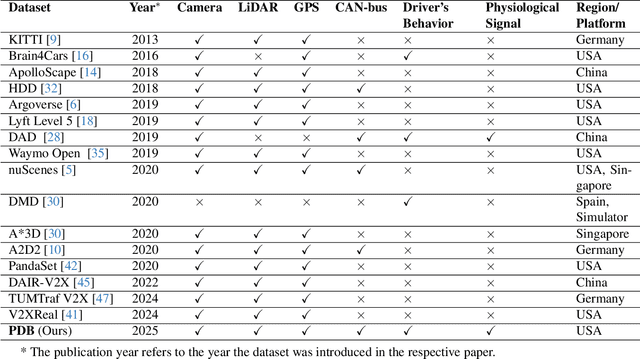
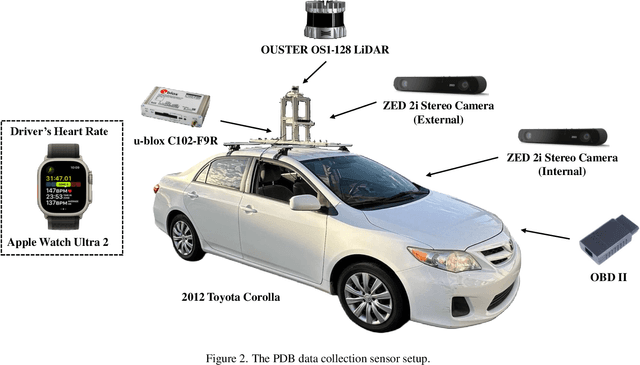
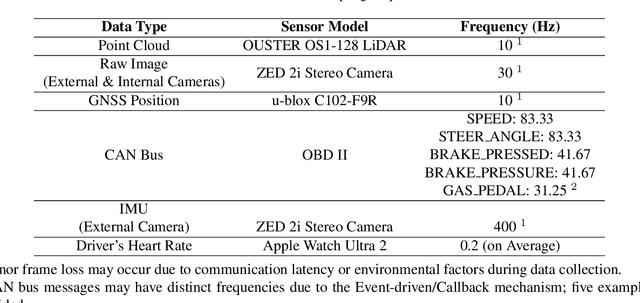
Abstract:Driving behavior is inherently personal, influenced by individual habits, decision-making styles, and physiological states. However, most existing datasets treat all drivers as homogeneous, overlooking driver-specific variability. To address this gap, we introduce the Personalized Driving Behavior (PDB) dataset, a multi-modal dataset designed to capture personalization in driving behavior under naturalistic driving conditions. Unlike conventional datasets, PDB minimizes external influences by maintaining consistent routes, vehicles, and lighting conditions across sessions. It includes sources from 128-line LiDAR, front-facing camera video, GNSS, 9-axis IMU, CAN bus data (throttle, brake, steering angle), and driver-specific signals such as facial video and heart rate. The dataset features 12 participants, approximately 270,000 LiDAR frames, 1.6 million images, and 6.6 TB of raw sensor data. The processed trajectory dataset consists of 1,669 segments, each spanning 10 seconds with a 0.2-second interval. By explicitly capturing drivers' behavior, PDB serves as a unique resource for human factor analysis, driver identification, and personalized mobility applications, contributing to the development of human-centric intelligent transportation systems.
Graph Edge Representation via Tensor Product Graph Convolutional Representation
Jun 21, 2024


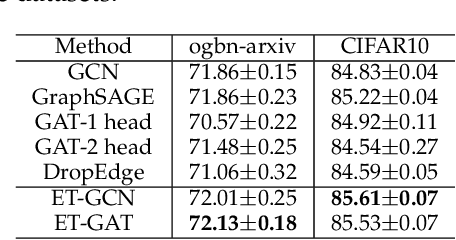
Abstract:Graph Convolutional Networks (GCNs) have been widely studied. The core of GCNs is the definition of convolution operators on graphs. However, existing Graph Convolution (GC) operators are mainly defined on adjacency matrix and node features and generally focus on obtaining effective node embeddings which cannot be utilized to address the graphs with (high-dimensional) edge features. To address this problem, by leveraging tensor contraction representation and tensor product graph diffusion theories, this paper analogously defines an effective convolution operator on graphs with edge features which is named as Tensor Product Graph Convolution (TPGC). The proposed TPGC aims to obtain effective edge embeddings. It provides a complementary model to traditional graph convolutions (GCs) to address the more general graph data analysis with both node and edge features. Experimental results on several graph learning tasks demonstrate the effectiveness of the proposed TPGC.
A Unified Graph Selective Prompt Learning for Graph Neural Networks
Jun 15, 2024Abstract:In recent years, graph prompt learning/tuning has garnered increasing attention in adapting pre-trained models for graph representation learning. As a kind of universal graph prompt learning method, Graph Prompt Feature (GPF) has achieved remarkable success in adapting pre-trained models for Graph Neural Networks (GNNs). By fixing the parameters of a pre-trained GNN model, the aim of GPF is to modify the input graph data by adding some (learnable) prompt vectors into graph node features to better align with the downstream tasks on the smaller dataset. However, existing GPFs generally suffer from two main limitations. First, GPFs generally focus on node prompt learning which ignore the prompting for graph edges. Second, existing GPFs generally conduct the prompt learning on all nodes equally which fails to capture the importances of different nodes and may perform sensitively w.r.t noisy nodes in aligning with the downstream tasks. To address these issues, in this paper, we propose a new unified Graph Selective Prompt Feature learning (GSPF) for GNN fine-tuning. The proposed GSPF integrates the prompt learning on both graph node and edge together, which thus provides a unified prompt model for the graph data. Moreover, it conducts prompt learning selectively on nodes and edges by concentrating on the important nodes and edges for prompting which thus make our model be more reliable and compact. Experimental results on many benchmark datasets demonstrate the effectiveness and advantages of the proposed GSPF method.
Power Transformer Fault Prediction Based on Knowledge Graphs
Feb 11, 2024Abstract:In this paper, we address the challenge of learning with limited fault data for power transformers. Traditional operation and maintenance tools lack effective predictive capabilities for potential faults. The scarcity of extensive fault data makes it difficult to apply machine learning techniques effectively. To solve this problem, we propose a novel approach that leverages the knowledge graph (KG) technology in combination with gradient boosting decision trees (GBDT). This method is designed to efficiently learn from a small set of high-dimensional data, integrating various factors influencing transformer faults and historical operational data. Our approach enables accurate safe state assessments and fault analyses of power transformers despite the limited fault characteristic data. Experimental results demonstrate that this method outperforms other learning approaches in prediction accuracy, such as artificial neural networks (ANN) and logistic regression (LR). Furthermore, it offers significant improvements in progressiveness, practicality, and potential for widespread application.
Unifying Graph Contrastive Learning via Graph Message Augmentation
Jan 08, 2024
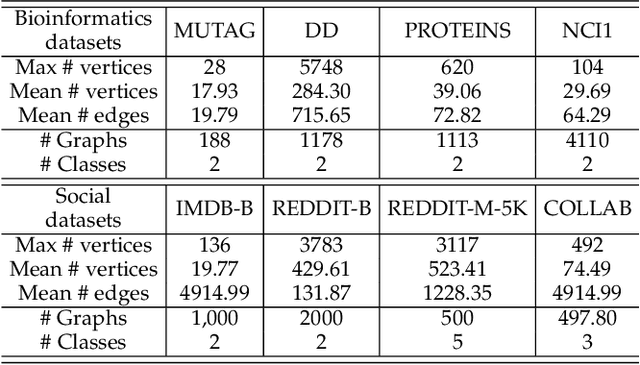

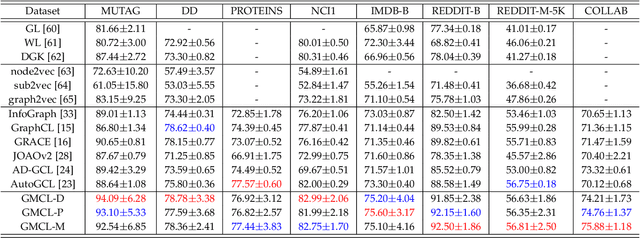
Abstract:Graph contrastive learning is usually performed by first conducting Graph Data Augmentation (GDA) and then employing a contrastive learning pipeline to train GNNs. As we know that GDA is an important issue for graph contrastive learning. Various GDAs have been developed recently which mainly involve dropping or perturbing edges, nodes, node attributes and edge attributes. However, to our knowledge, it still lacks a universal and effective augmentor that is suitable for different types of graph data. To address this issue, in this paper, we first introduce the graph message representation of graph data. Based on it, we then propose a novel Graph Message Augmentation (GMA), a universal scheme for reformulating many existing GDAs. The proposed unified GMA not only gives a new perspective to understand many existing GDAs but also provides a universal and more effective graph data augmentation for graph self-supervised learning tasks. Moreover, GMA introduces an easy way to implement the mixup augmentor which is natural for images but usually challengeable for graphs. Based on the proposed GMA, we then propose a unified graph contrastive learning, termed Graph Message Contrastive Learning (GMCL), that employs attribution-guided universal GMA for graph contrastive learning. Experiments on many graph learning tasks demonstrate the effectiveness and benefits of the proposed GMA and GMCL approaches.
VcT: Visual change Transformer for Remote Sensing Image Change Detection
Oct 17, 2023Abstract:Existing visual change detectors usually adopt CNNs or Transformers for feature representation learning and focus on learning effective representation for the changed regions between images. Although good performance can be obtained by enhancing the features of the change regions, however, these works are still limited mainly due to the ignorance of mining the unchanged background context information. It is known that one main challenge for change detection is how to obtain the consistent representations for two images involving different variations, such as spatial variation, sunlight intensity, etc. In this work, we demonstrate that carefully mining the common background information provides an important cue to learn the consistent representations for the two images which thus obviously facilitates the visual change detection problem. Based on this observation, we propose a novel Visual change Transformer (VcT) model for visual change detection problem. To be specific, a shared backbone network is first used to extract the feature maps for the given image pair. Then, each pixel of feature map is regarded as a graph node and the graph neural network is proposed to model the structured information for coarse change map prediction. Top-K reliable tokens can be mined from the map and refined by using the clustering algorithm. Then, these reliable tokens are enhanced by first utilizing self/cross-attention schemes and then interacting with original features via an anchor-primary attention learning module. Finally, the prediction head is proposed to get a more accurate change map. Extensive experiments on multiple benchmark datasets validated the effectiveness of our proposed VcT model.
AGFormer: Efficient Graph Representation with Anchor-Graph Transformer
May 12, 2023Abstract:To alleviate the local receptive issue of GCN, Transformers have been exploited to capture the long range dependences of nodes for graph data representation and learning. However, existing graph Transformers generally employ regular self-attention module for all node-to-node message passing which needs to learn the affinities/relationships between all node's pairs, leading to high computational cost issue. Also, they are usually sensitive to graph noises. To overcome this issue, we propose a novel graph Transformer architecture, termed Anchor Graph Transformer (AGFormer), by leveraging an anchor graph model. To be specific, AGFormer first obtains some representative anchors and then converts node-to-node message passing into anchor-to-anchor and anchor-to-node message passing process. Thus, AGFormer performs much more efficiently and also robustly than regular node-to-node Transformers. Extensive experiments on several benchmark datasets demonstrate the effectiveness and benefits of proposed AGFormer.
Research on Self-adaptive Online Vehicle Velocity Prediction Strategy Considering Traffic Information Fusion
Oct 07, 2022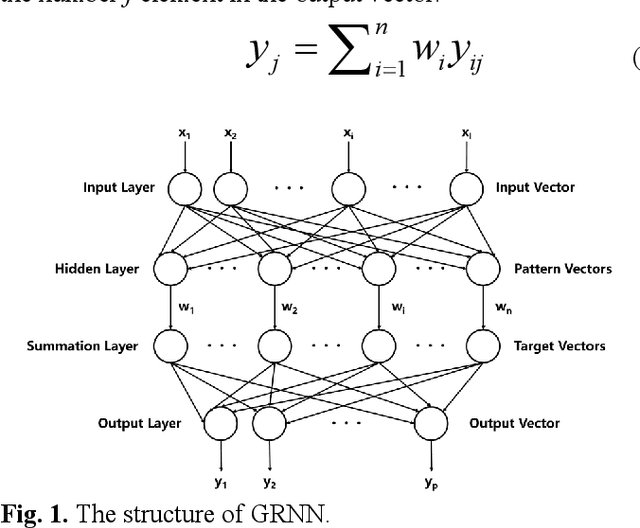
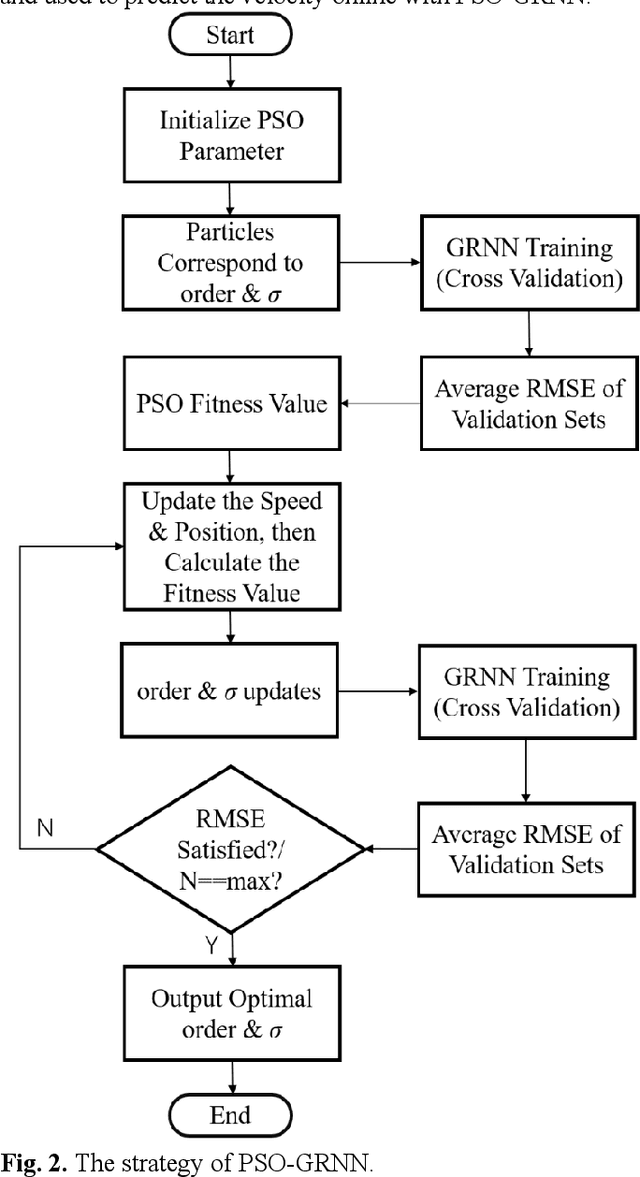
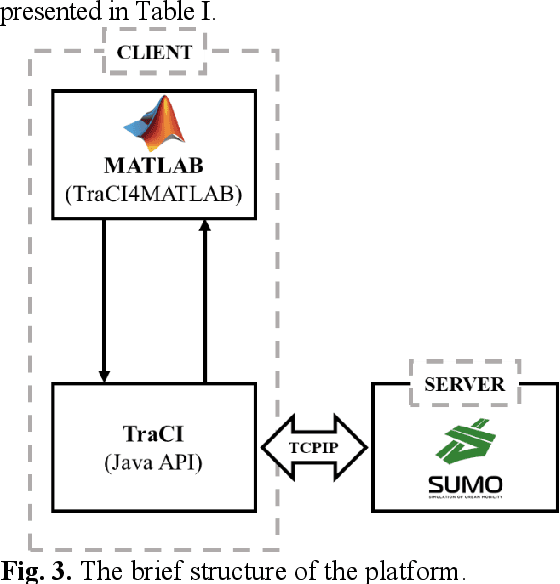
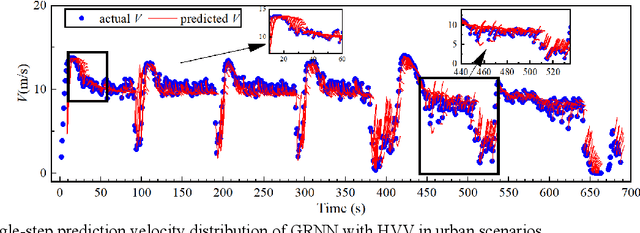
Abstract:In order to increase the prediction accuracy of the online vehicle velocity prediction (VVP) strategy, a self-adaptive velocity prediction algorithm fused with traffic information was presented for the multiple scenarios. Initially, traffic scenarios were established inside the co-simulation environment. In addition, the algorithm of a general regressive neural network (GRNN) paired with datasets of the ego-vehicle, the front vehicle, and traffic lights was used in traffic scenarios, which increasingly improved the prediction accuracy. To ameliorate the robustness of the algorithm, then the strategy was optimized by particle swarm optimization (PSO) and k-fold cross-validation to find the optimal parameters of the neural network in real-time, which constructed a self-adaptive online PSO-GRNN VVP strategy with multi-information fusion to adapt with different operating situations. The self-adaptive online PSO-GRNN VVP strategy was then deployed to a variety of simulated scenarios to test its efficacy under various operating situations. Finally, the simulation results reveal that in urban and highway scenarios, the prediction accuracy is separately increased by 27.8% and 54.5% when compared to the traditional GRNN VVP strategy with fixed parameters utilizing only the historical ego-vehicle velocity dataset.
Chinese grammatical error correction based on knowledge distillation
Aug 05, 2022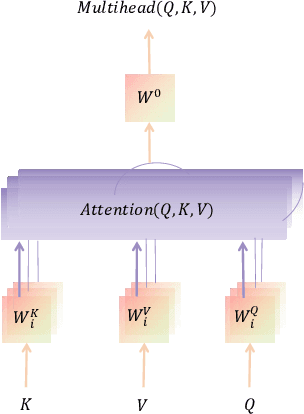

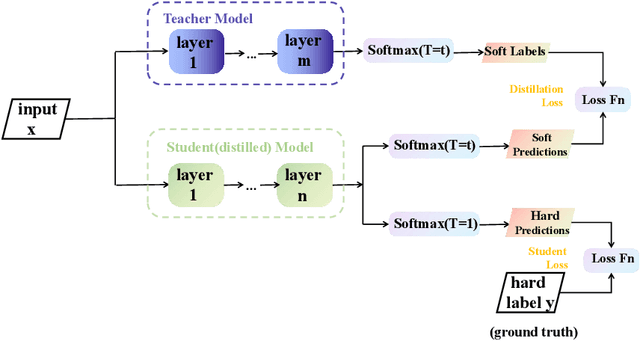

Abstract:In view of the poor robustness of existing Chinese grammatical error correction models on attack test sets and large model parameters, this paper uses the method of knowledge distillation to compress model parameters and improve the anti-attack ability of the model. In terms of data, the attack test set is constructed by integrating the disturbance into the standard evaluation data set, and the model robustness is evaluated by the attack test set. The experimental results show that the distilled small model can ensure the performance and improve the training speed under the condition of reducing the number of model parameters, and achieve the optimal effect on the attack test set, and the robustness is significantly improved.
 Add to Chrome
Add to Chrome Add to Firefox
Add to Firefox Add to Edge
Add to Edge